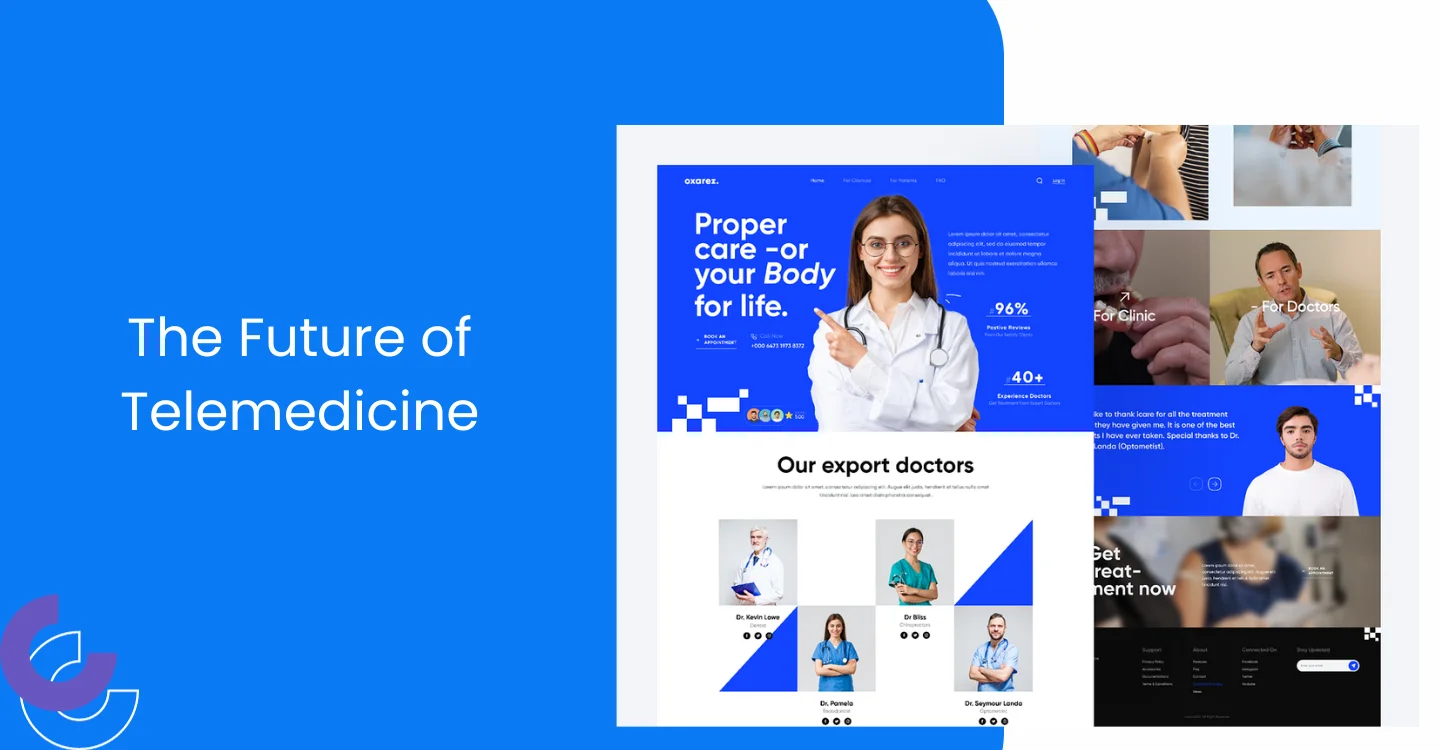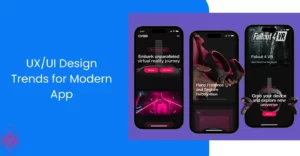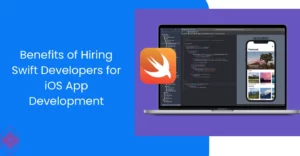Telemedicine is a technology that provides clinical help at a distance. It helps the patient get medical assistance when needed, especially for those with limited access to care.
It incorporates electronic and telecommunication technology to exchange health information, regardless of whether the doctor is in the same room. This enables medical information to be received through text messages, facilitating the performance of remotely controlled advanced surgery.
Some experts have employed telemedicine in a clinical setting for decades, with its first reference in medical literature recorded between the 1950s and 1960s.
Key Technological Advancements in Healthcare With the Help of Nextupgrad
1. Augmented & Virtual Reality in Healthcare
The healthcare industry has various applications for augmented and virtual reality (AR and VR). These technologies are employed for digital and environmental purposes in different ways. The development of augmented reality is reducing reliance on artificial intelligence.
As stated by health specialists, cancer can be detected through image recognition. Virtual Reality (VR) can also be employed in physical therapy, particularly in the treatment of mental trauma, where it has the potential to facilitate healing.
Doctors use VR glasses that incorporate advanced technology to display detailed images of the patient’s body. These glasses not only provide insights into the patient’s body, such as CAT scans and 3D images but also help doctors see and understand the patient’s condition more effectively.
One of the renowned companies that has developed these glasses is Microsoft, and the product is called HoloLens.
2. Internet of Things (IoT) in Healthcare

When Internet of Things (IoT) technology combines with the health sector, it heralds a new era in treating patients, report evaluation, and disease management. There is a wide variety of wearable gadgets and remote monitoring.
- Wearable Devices
Wearables transform how health institutions treat patients, addressing illnesses and providing health reports. These wearables are available in gadgets like fitness trackers, smartwatches, and medical wearables. Below, we have mentioned how they are revolutionizing the health sector. - Remote Monitoring
Through remote monitoring technology, healthcare providers can vigilantly observe patients from a distance, offering various benefits mentioned below:- Elderly Care: It proves to be a game-changer for older adults aiming to maintain their independence. Consequently, IoT in healthcare plays a crucial role in monitoring overall well-being, including medication adherence and fall detection.”
- Post-Operative Care: Following any surgery, monitoring the patient is essential, as it reduces the necessity for hospital admission postoperatively.
- Chronic Disease Management: Patients suffering from chronic illness can be constantly observed through remote monitoring, with healthcare providers receiving an instant signal when the patient’s health declines slightly.
- Reduced Hospital Readmissions: The unnecessary admission of patients to the hospital is reduced before escalation, alleviating the burden on healthcare providers and lowering the cost of care.
- Data-Driven Care: Data can be easily obtained through remote monitoring, enabling personalized treatment based on the patient’s condition and facilitating informed healthcare decisions.
3. Features Telehealth Platforms and Apps
- User Experience
User Experience ((UX) is a crucial part of telehealth applications and other platforms; it influences patient satisfaction and the complete effectiveness of remote healthcare delivery. To ensure a favorable user experience, developers and healthcare providers should go through the key factors below.
- User-Friendly Interface: The app’s interface should be easy to navigate. Understanding the interface between medical professionals and patients without training shouldn’t take much time.
- Accessibility: A person having a disability must be able to customize the setting as per convenience. There should be features like adjusting font size, voice commands, and subtitles under the video.
- Mobile Compatibility: The app should be adjustable and compatible with different screen sizes and devices. Its operating system must work on all devices.
- Video and Audio Quality: High-quality video and audio should be there as it is essential for the best health consultation. It prevents misunderstandings and manages quality control. i.e. Appointment Scheduling: Scheduling the time of the appointment enhances the user experience. It comes with features like reminders and notifications for upcoming appointments
- . Integration with Electronic Health Records (EHRs)
Integration with Electronic Health Records (EHRs) is vital in advanced telehealth platforms and apps. It offers several advantages like:
- Comprehensive Patient Data: Integrating with Electronic health records allows overall medical history and records that
include diagnosis, medications, allergies reports, etc. It not only gives you current data but also gives you previous ones. - Streamlined Workflows: It allows real-time consultation and updates the patient records during telehealth consultations. It decreases the chances of mistake and leads to a more effective workflow.
- Medication Management: The telehealth platform can have access to EHRs to confirm the patient’s current medication and check for potential medicine interaction. This leads to more safety and precautions.
- Billing and Documentation: EHR integration makes the billing and documentation procedure by automatically recording visits and charges. It lessens the administrative burden.
- Comprehensive Patient Data: Integrating with Electronic health records allows overall medical history and records that
Telehealth App Development Cost
Telehealth software cost depends on different aspects, from the app complexity level to the dedicated team’s location. Below we’ve designed a table with average time for developing popular telemedicine app components:
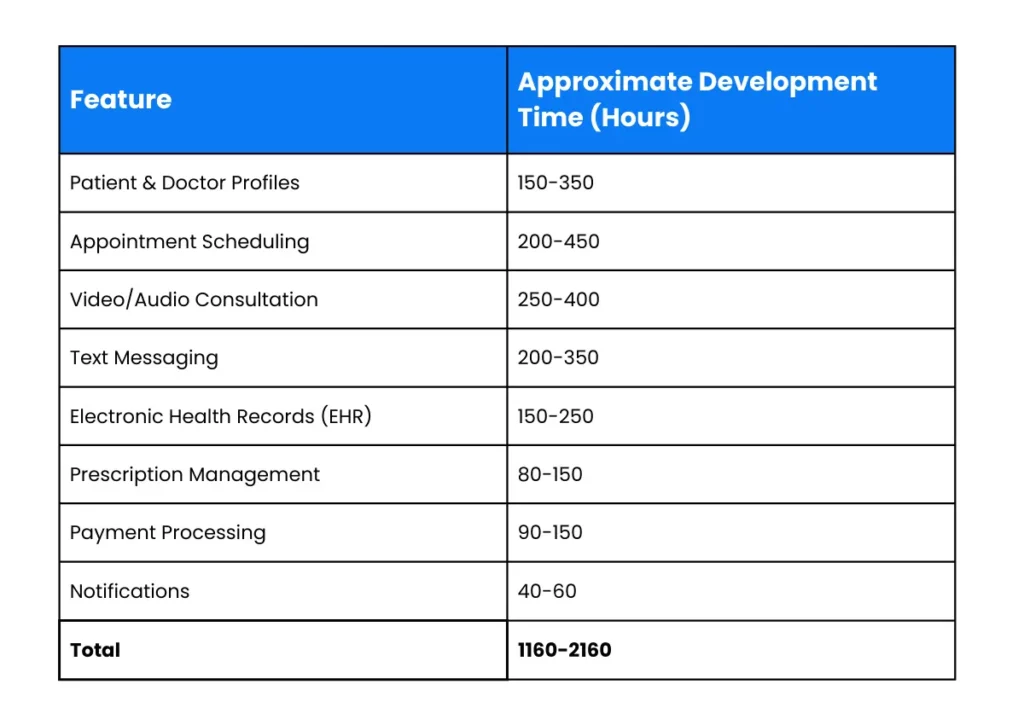
Accordingly, the telemedicine platform cost for MVP may vary from $180,000 to $335,000
Takeaway!
The future of telemedicine is immense, and the innovation is happening gradually, so you should also go with it so that you won’t left behind and unable to take the fullest advantage of the telehealth platform.
